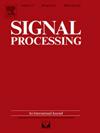Analog–digital precoding based on mutual coupling considering the actual radiation performance of MIMO antenna arrays
IF 3.4
2区 工程技术
Q2 ENGINEERING, ELECTRICAL & ELECTRONIC
引用次数: 0
Abstract
Mutual coupling among antenna array elements can have impacts on not only the elements’ mutual impedance but also the radiation characteristics, which is usually not considered appropriately in previous precoding researches. In this paper, an analog–digital precoding scheme based on mutual coupling is proposed considering the actual radiation performance of multiple-input multiple-output antenna arrays. Instead of reducing or eliminating the mutual coupling effect as in the conventional approach, this paper focuses on exploiting it to improve the system performance. Open-circuit radiation pattern is firstly introduced in the system model to further evaluate the effect of mutual coupling on the antenna radiation performance. Conventional linear precoding is applied in the digital domain. As for the analog domain, to minimize the noise amplification factor and thus maximize the receive signal-to-noise ratio of the system through exploiting the mutual coupling effect, the proper load impedances and antenna weighting coefficients are selected by convex optimization and Newton method. Simulation results show that the proposed scheme performs significantly better than the conventional one without mutual coupling in zero forcing and minimum mean square error systems. Besides, greater performance gain in MIMO systems with smaller antenna spacing, higher dimensionality and larger apparent power are observed.
求助全文
约1分钟内获得全文
求助全文
来源期刊

Signal Processing
工程技术-工程:电子与电气
CiteScore
9.20
自引率
9.10%
发文量
309
审稿时长
41 days
期刊介绍:
Signal Processing incorporates all aspects of the theory and practice of signal processing. It features original research work, tutorial and review articles, and accounts of practical developments. It is intended for a rapid dissemination of knowledge and experience to engineers and scientists working in the research, development or practical application of signal processing.
Subject areas covered by the journal include: Signal Theory; Stochastic Processes; Detection and Estimation; Spectral Analysis; Filtering; Signal Processing Systems; Software Developments; Image Processing; Pattern Recognition; Optical Signal Processing; Digital Signal Processing; Multi-dimensional Signal Processing; Communication Signal Processing; Biomedical Signal Processing; Geophysical and Astrophysical Signal Processing; Earth Resources Signal Processing; Acoustic and Vibration Signal Processing; Data Processing; Remote Sensing; Signal Processing Technology; Radar Signal Processing; Sonar Signal Processing; Industrial Applications; New Applications.
 求助内容:
求助内容: 应助结果提醒方式:
应助结果提醒方式:


